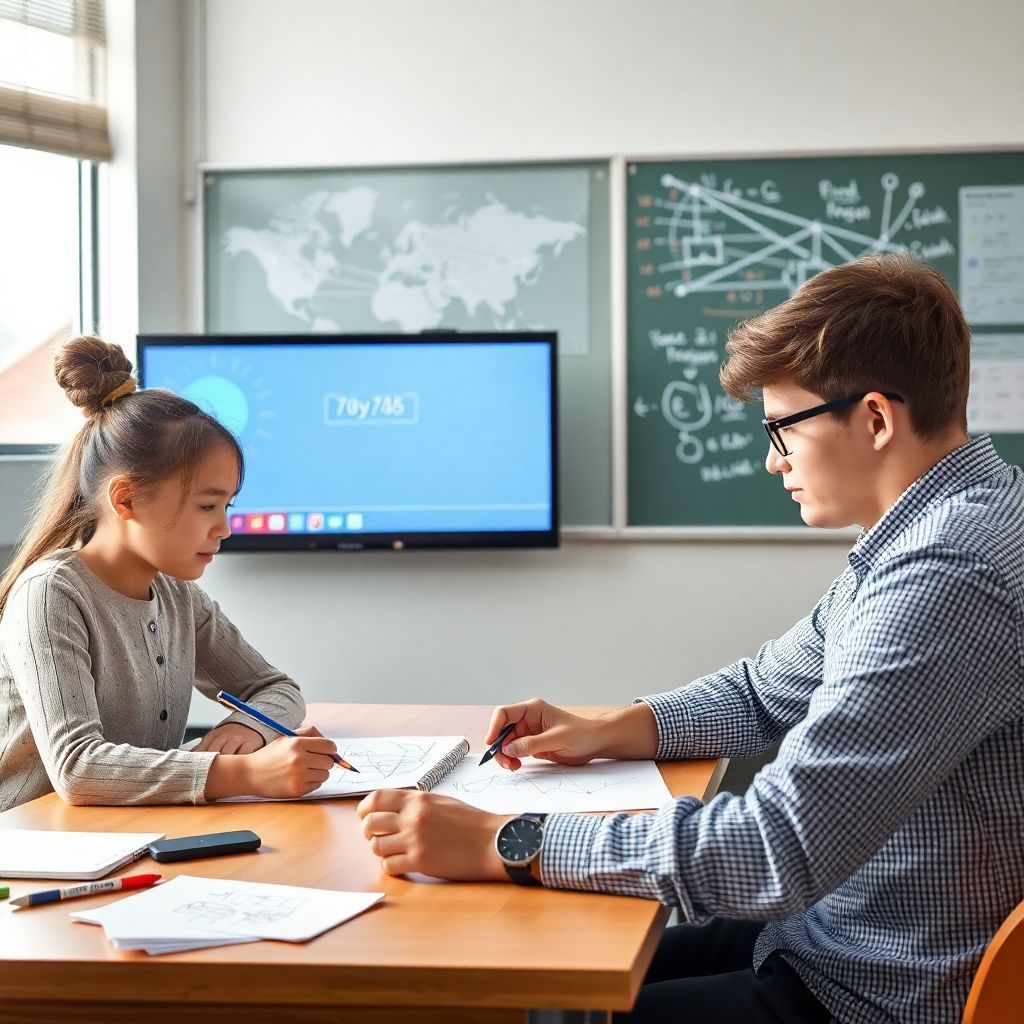Transforming Classrooms: How AI Whiteboards Are Changing the Way We Learn

Picture this: A high school physics class where students from three different countries collaborate on solving a complex problem. A girl in Tokyo sketches a force diagram while a boy in Toronto adds calculations alongside it, as their teacher in Sydney provides real-time feedback on their work. This isn't science fiction – it's happening now, thanks to AI-powered collaborative whiteboards.
The Engagement Game-Changer
Remember those old-school whiteboards where markers would mysteriously disappear and someone's sleeve would always erase half your work? Today's AI whiteboards are nothing like that.
My colleague Jane, a middle school science teacher, recently told me how her students' eyes lit up when she introduced interactive simulations on their classroom's AI whiteboard. "They were literally crowding around it during lunch breaks to play with the molecular structure models," she laughed. "I never thought I'd see kids fighting over who gets to study next!"
These boards bring lessons to life in ways traditional teaching can't match:
- They transform static diagrams into moving, interactive models that students can manipulate
- They turn routine practice into exciting challenges with game elements that celebrate progress
- They keep even the most restless students engaged through physical interaction with the content
Collaboration Without Borders
What strikes me most about these tools is how they've redefined collaboration. In my nephew's elementary classroom, half the students attend in person while others join remotely – yet you'd never know who's where when they're all contributing to the same digital canvas.
The magic happens when:
- Marco shares his solution from home while Emma builds on it from her desk
- Ms. Peterson notices a misconception and can immediately circle it, prompting discussion
- Small groups tackle different parts of a problem simultaneously, then bring their work together
One teacher from rural Montana told me, "Before this technology, my students felt isolated. Now they regularly collaborate with a partner class in Boston. It's expanded their worldview in ways I couldn't have imagined."
Meeting Students Where They Are
We've known for decades that kids learn differently, but traditional classrooms often struggled to accommodate those differences. Sarah, a special education coordinator I spoke with, calls AI whiteboards "the great equalizer."
For visual learners, these boards create dynamic mind maps and colorful visuals that cement concepts. Kinesthetic learners can physically interact with the content, dragging, resizing, and manipulating objects. And for students who learn best by listening? The boards can narrate text, provide audio feedback, and record discussions for later review.
"I had a non-verbal student who struggled to participate," Sarah shared. "With the whiteboard's speech-to-text function, he could type his thoughts and have them read aloud to the class. For the first time, he felt truly part of the discussion."
Smart Boards, Smarter Classrooms
When paired with today's interactive flat panels, these AI-powered boards become even more powerful. In my daughter's high school:
The French teacher uses real-time translation to help beginners follow along while still immersing them in the language. Students scribble notes by hand, which magically transform into typed text that's searchable later. And at the end of each session, the system automatically organizes all materials, sending personalized notes to each student based on what they contributed.
"I used to spend hours writing up lesson summaries," says Mr. Jacobs, a history teacher at the school. "Now I can focus that energy on planning more engaging activities instead."
Making It Work in Your Classroom
If you're thinking about diving into the world of AI whiteboards, here's what experienced educators suggest:
Start small. Choose one feature to master each week rather than trying to transform your teaching overnight. Find a tech-savvy colleague who can be your sounding board (pun intended) as you experiment. And don't abandon your tried-and-true teaching methods – these tools should enhance your teaching style, not replace it.
As one veteran teacher put it, "The technology is impressive, but it's still just a tool. Your connection with students remains the heart of good teaching."
The Big Picture
In my twenty years observing educational trends, few technologies have shown as much promise for creating truly inclusive classrooms as AI-powered collaborative whiteboards. They're breaking down walls – between students of different abilities, between schools in different locations, and between teaching methods that once seemed incompatible.
Are they perfect? Of course not. Do they require investment, training, and patience? Absolutely. But when I see a formerly disengaged student eagerly explaining a concept to classmates using a virtual model he created, I know we're onto something revolutionary.
Want to See More?
Curious about other ways technology is reshaping education? I've been documenting these changes across different school settings. Drop by our blog for stories about real teachers making these tools work in surprising ways. Your classroom's transformation might be just an article away.